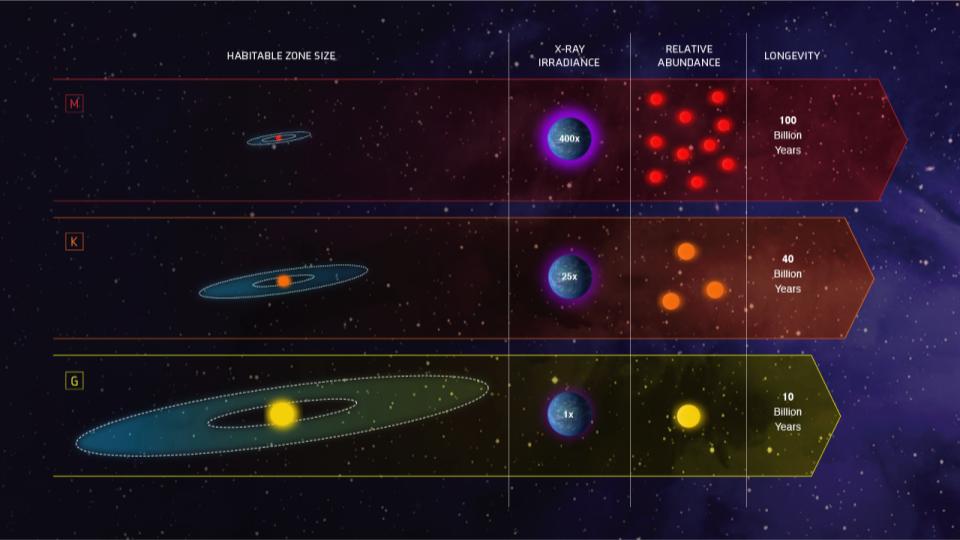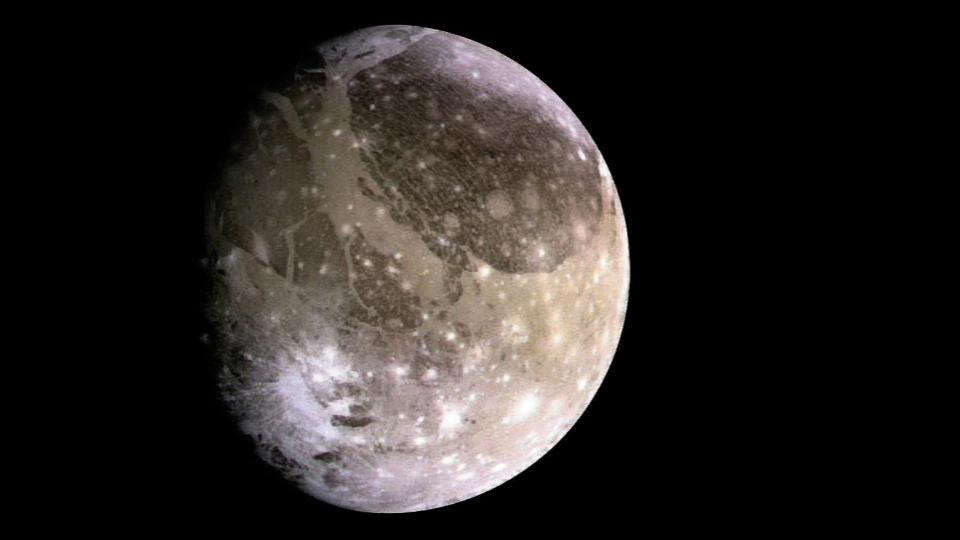It is Monday, and for many of us, it is the first normal week of the new year. Kids are returning to college, astronomers are returning from AAS, and TV shows are returning from hiatus. As we try to figure out what normal is going to look like for 2020, we here at the Daily Space want to remind you – that new normal probably doesn’t include aliens.

Image of the host galaxy of FRB 180916 (center) acquired with the 8-meter Gemini-North telescope of NSF’s OIR Lab on Hawaii’s Maunakea. Images acquired in SDSS g’, r’, and z’ filters are used for the blue, green, and red colors, respectively. The position of the FRB in the spiral arm of the galaxy is marked by a green circle.
Credit: Gemini Observatory/NSF’s National Optical-Infrared Astronomy Research Laboratory/AURA
- Fast Radio Burst Observations Deepen Astronomical Mystery (NSF)
- A fast radio burst tracked down to a nearby galaxy (McGill)
- A repeating Fast Radio Burst from a spiral galaxy deepens the mystery of where these signals originate from (JIVE)
- A Repeating Fast Radio Burst from a Spiral Galaxy (Max Planck)
This weekend, we were a bit confused and disturbed to see reporting on fast radio bursts that implied these bursts were the kind of radio signals SETI has been searching for.
No.
Just no.
Last week there was a series of press releases that came out during the American Astronomical Society meeting concerning one very specific fast radio burst – FRB 180916.J0158+65 – and its location in a not too distant spiral galaxy. At the time, we didn’t cover this story because there just wasn’t a lot to cover.
Fast Radio Bursts, or FRBs, are millisecond long bursts of radio emission that appear both as singular bursts and repeating bursts. The first FRB was discovered in archival data in 2007, and in the years since, attempts to discover the source of these bursts has been full of confusion. While archival searches have found bursts, observing them on purpose has been hard.
In 2010, 16 FRBs detected by Parkes Radio Telescope were found to be of terrestrial origin, and were associated with standard kitchen microwave ovens. While this led to some discussion that microwave ovens might be the source of all FRBs, the detection of a repeating FRB in 2012 quelled that line of thinking. That object, FRB 121102, has a highly variable pattern of bursts. It appears to be associated with – or at least aligned on the sky with – a dwarf galaxy about 3 billion light years from Earth. What the source is, well, the literature is a mess, but most guesses point toward some sort of a compact object, like a neutron star or black hole, having a strong magnetic field that is interacting with something somehow.
This kind of vague and inconclusive kind of observation is the norm for FRBs, and when a series of new releases came out last week, we looked at the science, and decided to pass over the releases in favor of other more definitive news. Last week a consortium of institutions announced that another repeating FRB has been identified with a location on the sky, and this time the alignment was with a star-forming region in a spiral galaxy. This region is sufficiently different from past observations to make the science about FRBs even more confusing. According to team member Kenzie Nimmo if the University of Amsterdam, “The found location is radically different from the previously located repeating FRB, but also different from all previously studied FRBs. The differences between repeating and non-repeating fast radio bursts are thus less clear and we think that these events may not be linked to a particular type of galaxy or environment. It may be that FRBs are produced in a large zoo of locations across the Universe and just require some specific conditions to be visible.”
In other words, we have little idea what FRBs are, and they could be a whole lot of different things… After all, we already know some are signals from other galaxies and some are Australian microwave ovens.
When there is a gap in understanding, it’s possible for people to guess at solutions, and in the case of FRBs, some have guessed that these signals are digitized shouts from alien civilizations – either pulsed communications we can’t understand, or just a burst of energy meant to say “Hey, we’re here.” While there is a non-zero chance one or some of the bursts can be explained this way, a non-zero possibility and a likely possibility aren’t the same, and what we’re seeing with the recurring bursts appears to be too energetic to rationally be created artificially, unless your way a forming things artificially includes the ability to alter the behaviors of stars and the materials falling onto compact objects.
So, to the headlines claiming astronomers have found the radio signals that SETI has been searching for … no. This is not definitive evidence of aliens, or actually definitive news of anything whatsoever. This is news that we have now, for the second time, figured out where on the sky a weird signal is coming from. That’s it. That’s all we know. A location, but not even a certain distance.
The universe is full of weird stuff. Hopefully some of that weird stuff is also biological. When and if we do find it, the evidence will need to be extraordinary, and if it happens in our careers, we promise to explain that evidence to you here on the Daily Space.

CREDITS:NASA, ESA, and Z. Levy (STScI)
In other news, we have an update on where to look for life from the Goldilocks project. Led by Ed Guinan and Scott Engle, this Villanova University project is working to define where life is most likely to exist, and by the numbers the answer appears to be around K stars. Slightly cooler than our Sun, and a lot more common, these orange stars don’t go through as prolonged a period of violence as red dwarf stars, and because they are larger, they have a larger habitable zone. With the inner edge of these habitable regions much farther from the surface of these less violent stars, this team finds planets would get about 1/100th as much deadly radiation as similar worlds in orbit around active M-dwarfs.
So – if you want to rationally search for life, around K-dwarfs, not FRBs, are the places you need to go look.
In talking about habitable zones, we are generally referring to the regions around stars where liquid water can exist on the surface of a planet because it receives enough light from its star to melt ice, but not so much that all that water evaporates away. As we look around our solar system, we’re realizing that physics and geology have teamed up to create liquid water in many other ways.

- Decades-Old Data Shows Auroras on Jupiter’s Moon Ganymede in a New Light (Space.com)
- Ganymede (Wikipedia)
410 years ago today, Galileo discovered the moon Ganymede orbiting Jupiter. This giant moon is larger than Mercury, and has a rocky looking surface and probably a nickel iron core that is responsible for its strong magnetic field. Between this surface and that core is where things get interesting. Based on a variety of different kinds of observations, it appears that Ganymede has a subsurface ocean that is heated by the constant flexing and stretching the world experiences as it interacts gravitationally with the other Galilean moons. These oceans may be the largest in our solar system, with a possible depth of 800km. If there is life in the oceans, we don’t have a way to detect it, at least not today. This is a reminder that life may exist in all sorts of places where we can’t remotely detect it, and all these discussions of goldilocks zones only apply to surface life, like us, and we have no way of knowing what kind of life, if any, is common out there among the stars.
<———————>
And that rounds out our show for today.
Thank you all for listening. The Daily Space is produced by Susie Murph, and is a product of the Planetary Science Institute, a 501(c)3 non profit dedicated to exploring our Solar System and beyond. We are here thanks to the generous contributions of people like you. Want to become a supporter of the show? Check us out at Patreon.com/cosmoquestx
Each live episode of the Daily Space is archived on YouTube. If you miss an episode on Twitch.tv, you can find it later on youtube.com/c/cosmoquest. These episodes are edited and produced by Susie Murph.
We really wouldn’t be here without you – thank you for all that you do.


 We record most shows live, on Twitch. Follow us today to get alerts when we go live.
We record most shows live, on Twitch. Follow us today to get alerts when we go live.